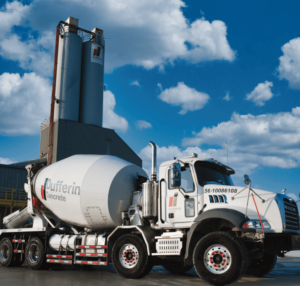What Is Asset Accounting in SAP FICO?
Introduction
Focusing on managing an organization’s fixed assets, Asset Accounting is an essential part of the SAP FICO (Financial Accounting and Controlling) system. It involves acquisition, capitalization, and depreciation and transfer and retirement. Asset Accounting in SAP FICO helps the entire asset lifecycle. It ensures precise financial reporting and adherence to several accounting standards by seamlessly combining other SAP systems. Along with automating asset tracking and valuation, this system improves decision-making by means of comprehensive reporting and real-time data visibility. One can join SAP FICO Training and Placement for the best skill development and opportunities. This guide offers detailed overview of SAP FICO Asset Accounting. Read this section to know more.
All About Asset Accounting in SAP FICO
SAP FICO’s Asset Accounting (FI-AA) is essential for managing and monitoring fixed assets within a company. It works closely with other modules like Financial Accounting (FI), Controlling (CO), Plant Maintenance (PM), and Materials Management (MM). From acquisition and capitalization to retirement or scrapping, Asset Accounting makes sure that an organization records, tracks, and reports its fixed assets all through their lifecycle.
Key Features Of SAP FICO Asset Accounting
- Asset Master Data: Every asset is logged using a different master record that includes asset class, cost center, location, and depreciation method.
- Asset Transactions: Covers adjustments, retirements, transfers, and asset purchases. General Ledger (GL) updates automatically follow transactions.
- Depreciation Calculation: SAP supports straight-line, decreasing balance, or tailored approaches by automating depreciation according to specified criteria. Scheduled depreciation runs guarantee appropriate posting.
- Integration with Other Modules: Directly assuring consistency and traceability, asset buying can be related either with procurement (MM) or capital investments (IM).
- Asset Reporting: Offers comprehensive reports including planned depreciation schedules, book value assessments, and asset history sheets.
Benefits Of SAP FICO Asset Accounting
- Accurate Financial Reporting: Systematic asset tracking and depreciation guarantees transparency and adherence to accounting standards (e.g., IFRS, GAAP).
- Real-Time Integration: Automatic General Ledger postings help to lower manual errors and improve efficiency.
- Better Asset Control: Planning maintenance, insurance, or disposals benefits from real-time visibility into asset status, value, and location.
- Simplified Audits: Comprehensive reports and transaction logs help to simplify both internal and outside audits.
- Cost Optimization: Helps in cost control and investment decisions by tracking asset use and depreciation.
Thus, Asset Accounting in SAP FICO is vital to maintain and manage an organization’s fixed assets. It provides precise financial information, enables organizations to follow rules, and guides them in making calculated investment decisions.
How Is Asset Accounting Done?
From acquisition to retirement, SAP FICO’s Asset Accounting is a systematic approach that governs the whole lifecycle of fixed assets. For accuracy and efficiency, the system combines a series of steps with other SAP components such MM (Materials Management) and CO (Controlling). Aspiring professionals can join the SAP FICO Certification training to learn how Asset Accounting is performed in SAP FICO.
1. Creation of Asset Master Data
An asset master data gives every asset a distinct identification. This record covers asset class, cost centre, location, and depreciation keys among other things. The accounting standards and depreciation techniques depend on asset classes such as buildings, vehicles, or equipment.
2. Asset Acquisition
Assets may be internally (through capital investment) or externally (through purchase) obtained. External acquisition usually involves an MM purchase order. The asset value is capitalized once the invoice finds its way into FI. Values for internal acquisitions are posted straight via journal entries.
3. Asset Capitalization
Once acquired, the worth of the asset gets recorded in the proper asset account. This method ensures real-time integration by automatically updating the General Ledger (GL).
4. Depreciation Calculation
Periodic depreciation is calculated by SAP using preset keys. Once a month, once a quarter, or once a year this can be done. In both FI and CO, the system automatically distributes depreciation expenses to appropriate accounts.
5. Asset Transfers
SAP logs the transaction and preserves asset history unaltered if an asset is transferred between cost centres, business units, or locations.
6. Asset Retirement or Disposal
The system posts required accounting entries and changes the asset value and accumulated depreciation when it is sold, scrapped, or retired.
7. Asset Reporting
Supporting audits and management decisions, SAP offers asset history sheets, asset balances, and depreciation projections.
In short, SAP FICO’s asset accounting guarantees complete asset management, automatic financial postings, and precise legal and corporate reporting compliance as well as accurate legal compliance. Consider joining SAP FICO Training in Noida for the best guidance in this field.
Conclusion
Asset Accounting in SAP FICO offers an all-inclusive and integrated approach for handling fixed assets across their lifecycle. From acquisition to retirement, it ensures accurate financial tracking, automated depreciation, and real-time interfacing with other systems. It allows for better compliance, simplified audits, and informed asset management decisions. This makes Asset Accounting in SAP FICO a vital instrument for businesses working to preserve financial transparency and operational effectiveness.













